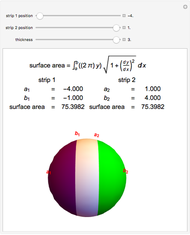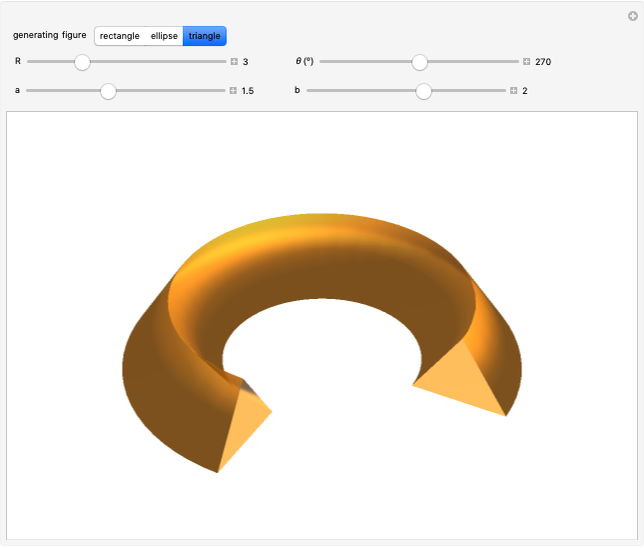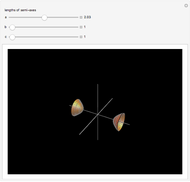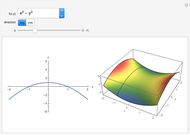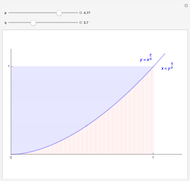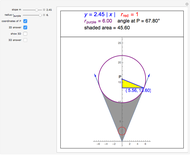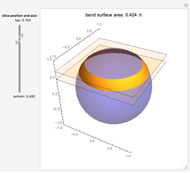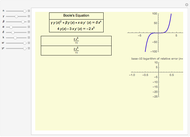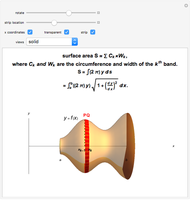Soap Film between Two Equal and Parallel Rings

Requires a Wolfram Notebook System
Interact on desktop, mobile and cloud with the free Wolfram Player or other Wolfram Language products.
A soap film is formed between two parallel rings of radius  separated by a distance
separated by a distance  . To minimize the surface-tension energy of the soap film, its total area
. To minimize the surface-tension energy of the soap film, its total area  seeks a minimum value. The derivation of the shape of the film involves a problem in the calculus of variations. Let
seeks a minimum value. The derivation of the shape of the film involves a problem in the calculus of variations. Let  represent the functional form of the film in cylindrical coordinates. The area is then given by
represent the functional form of the film in cylindrical coordinates. The area is then given by  . The integrand
. The integrand  is determined by the Euler–Lagrange equation
is determined by the Euler–Lagrange equation  , which can be reduced to its first integral
, which can be reduced to its first integral  , a constant. The solution works out to
, a constant. The solution works out to  , a catenary of revolution, with the boundary condition
, a catenary of revolution, with the boundary condition  . When
. When  , the film collapses to disks within the two rings.
, the film collapses to disks within the two rings.
Contributed by: S. M. Blinder (March 2011)
Open content licensed under CC BY-NC-SA
Snapshots
Details
Reference
[1] G. B. Arfkin and H. J. Weber, Mathematical Methods for Physicists,  ed., Amsterdam: Elsevier, 2005 pp. 1044–1049.
ed., Amsterdam: Elsevier, 2005 pp. 1044–1049.
Permanent Citation






